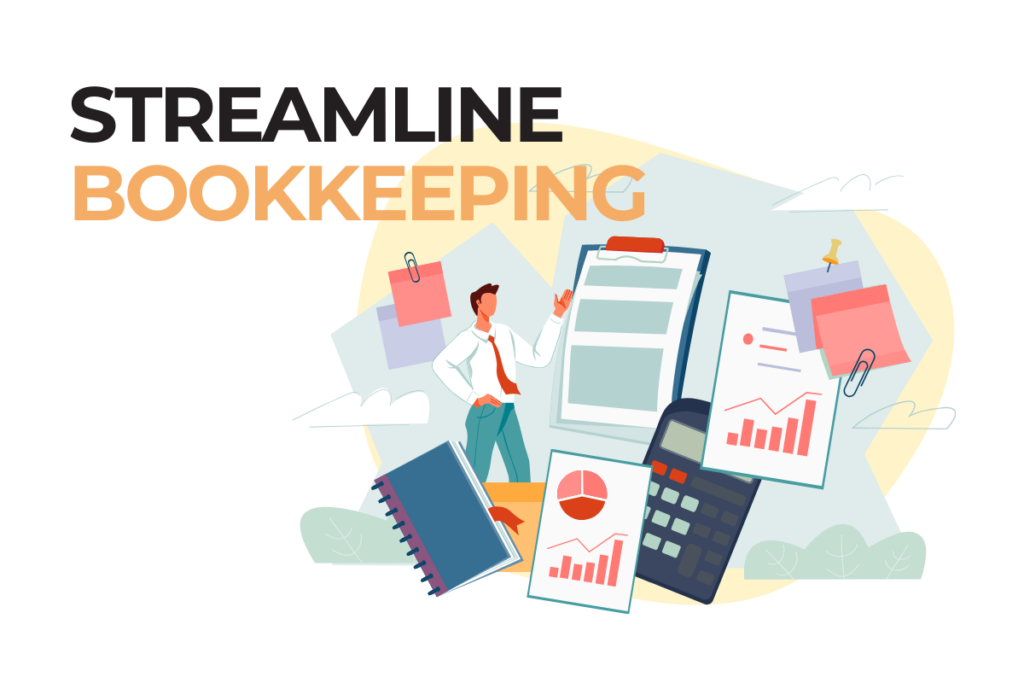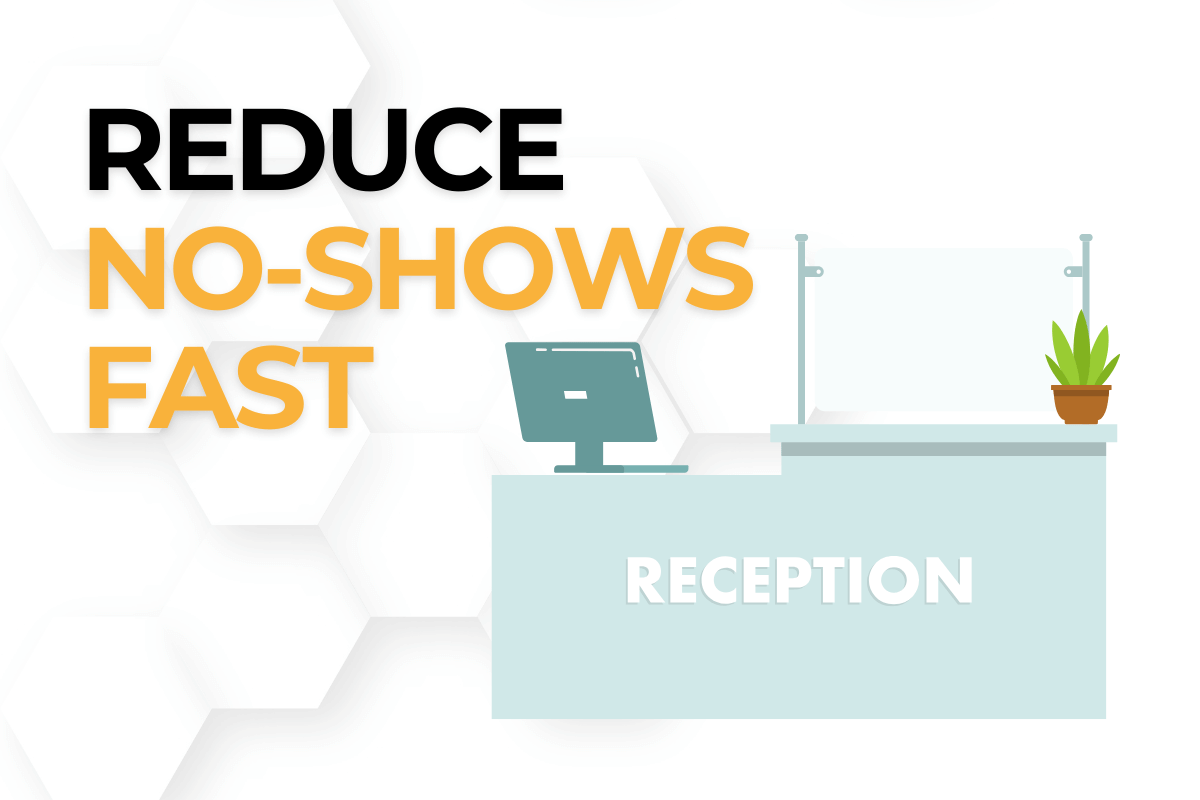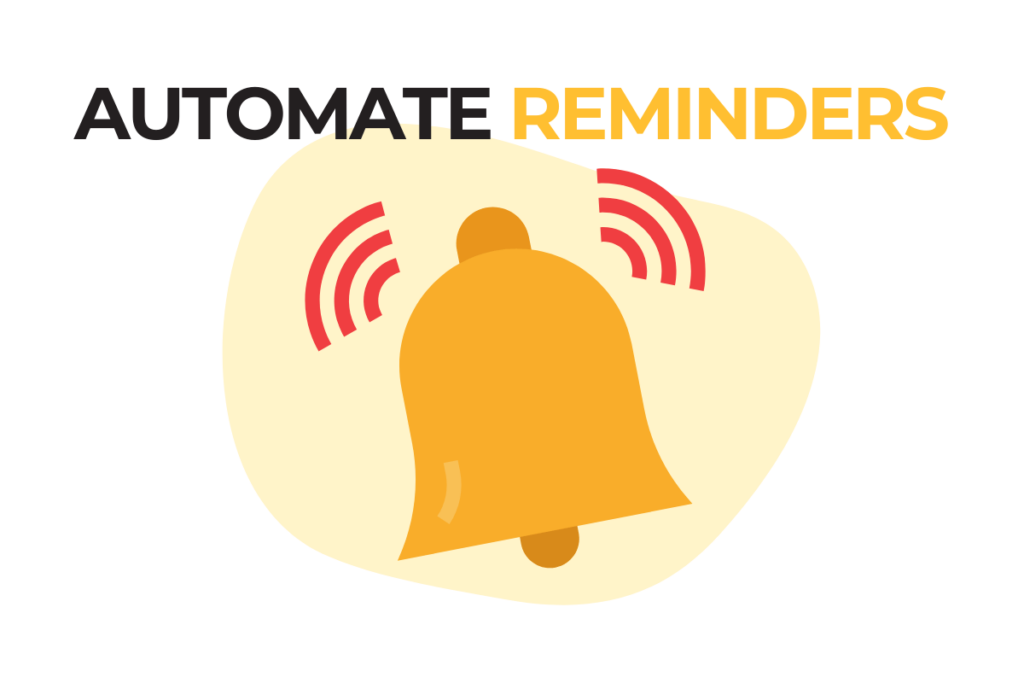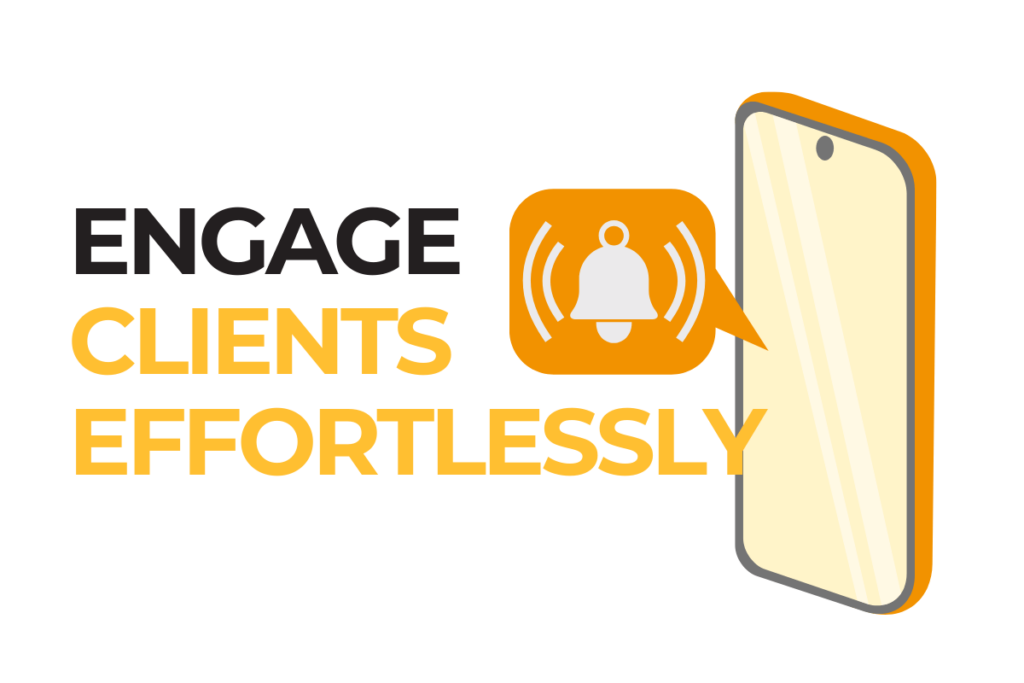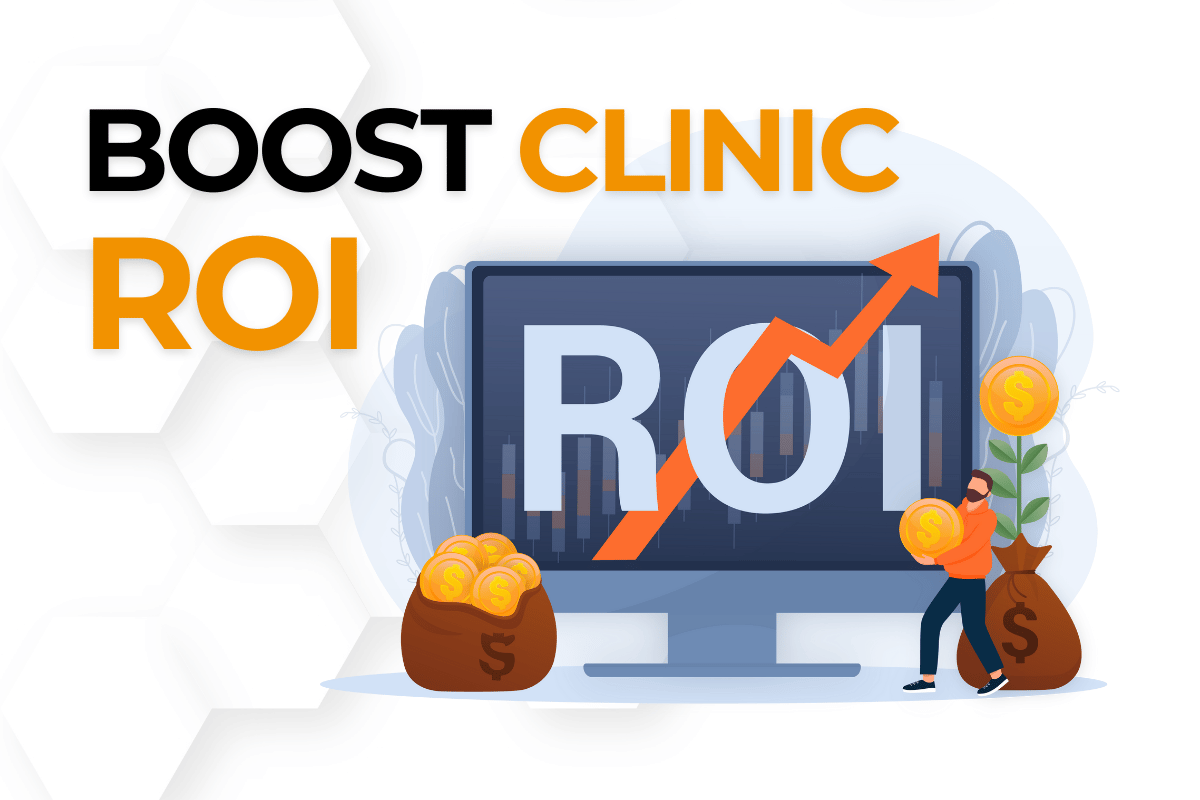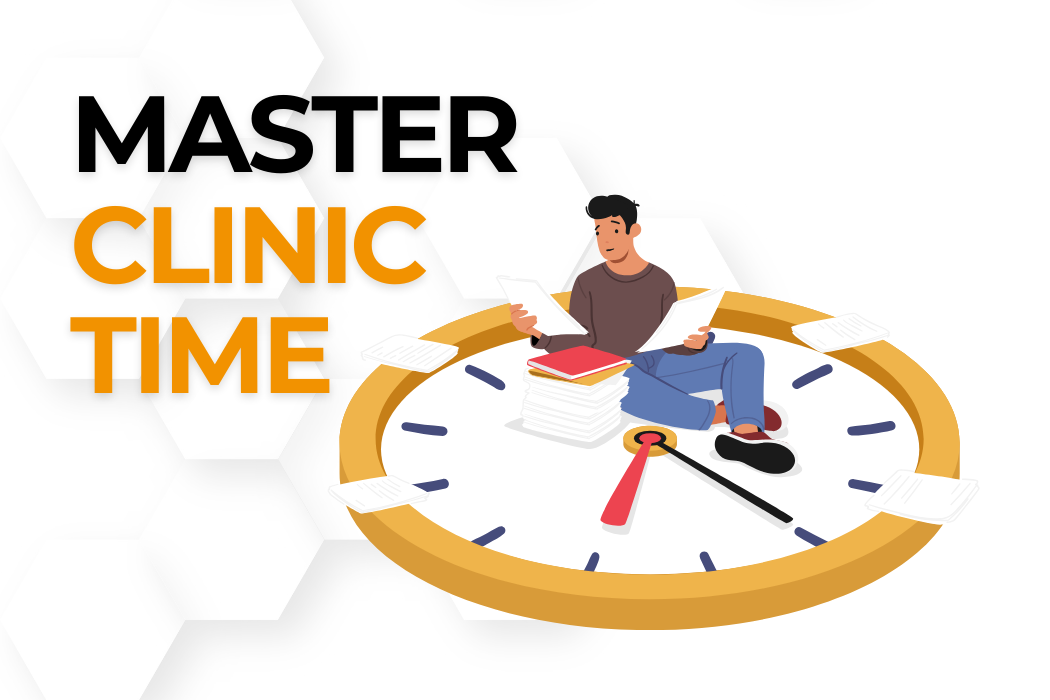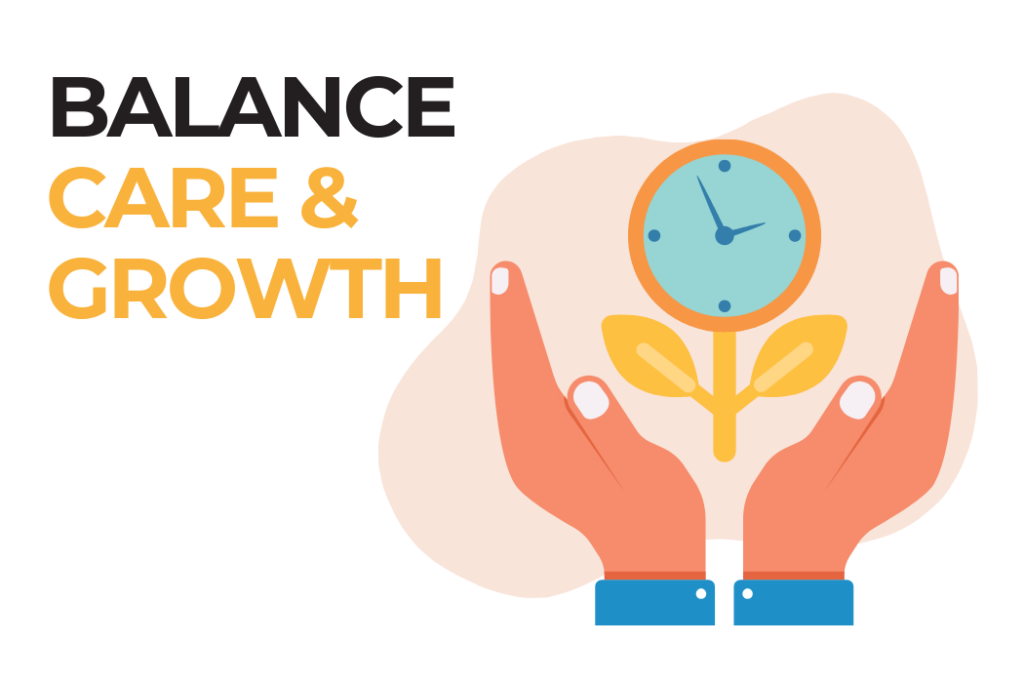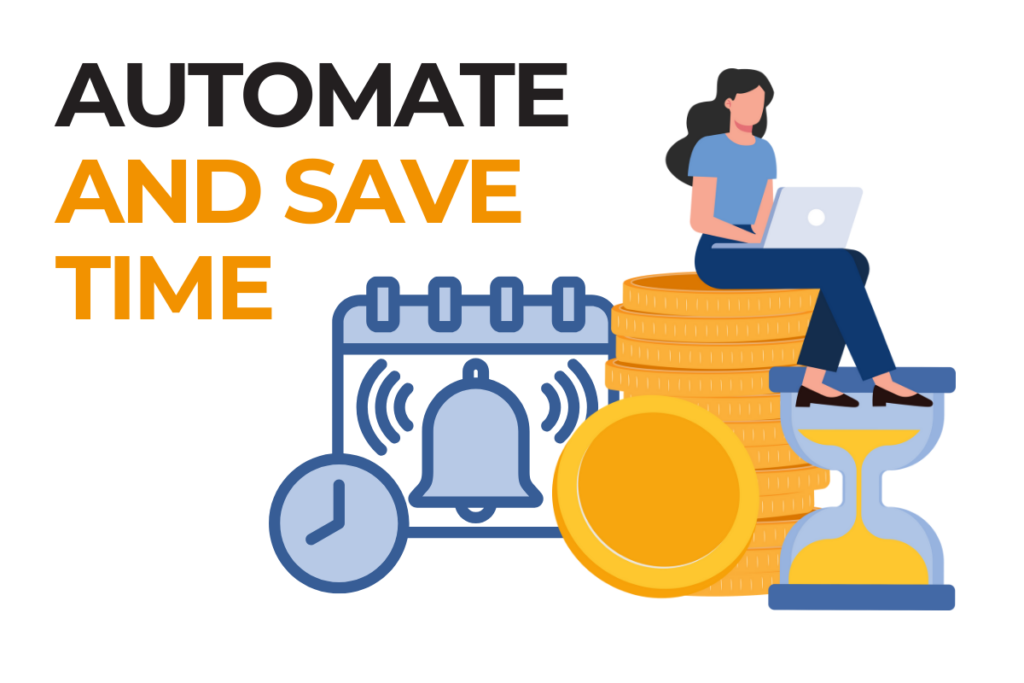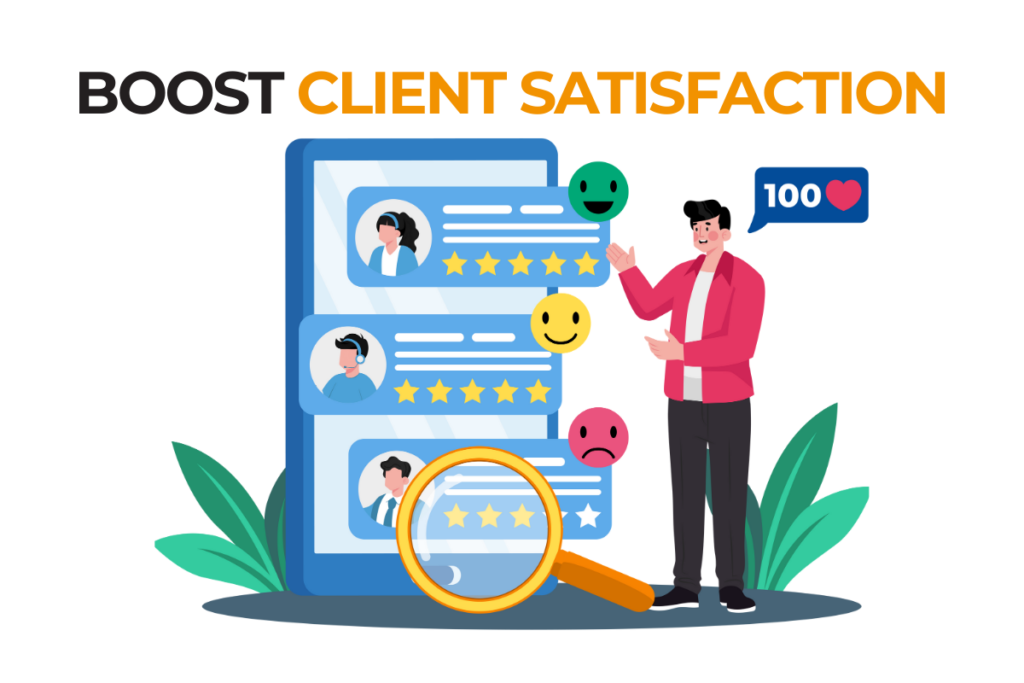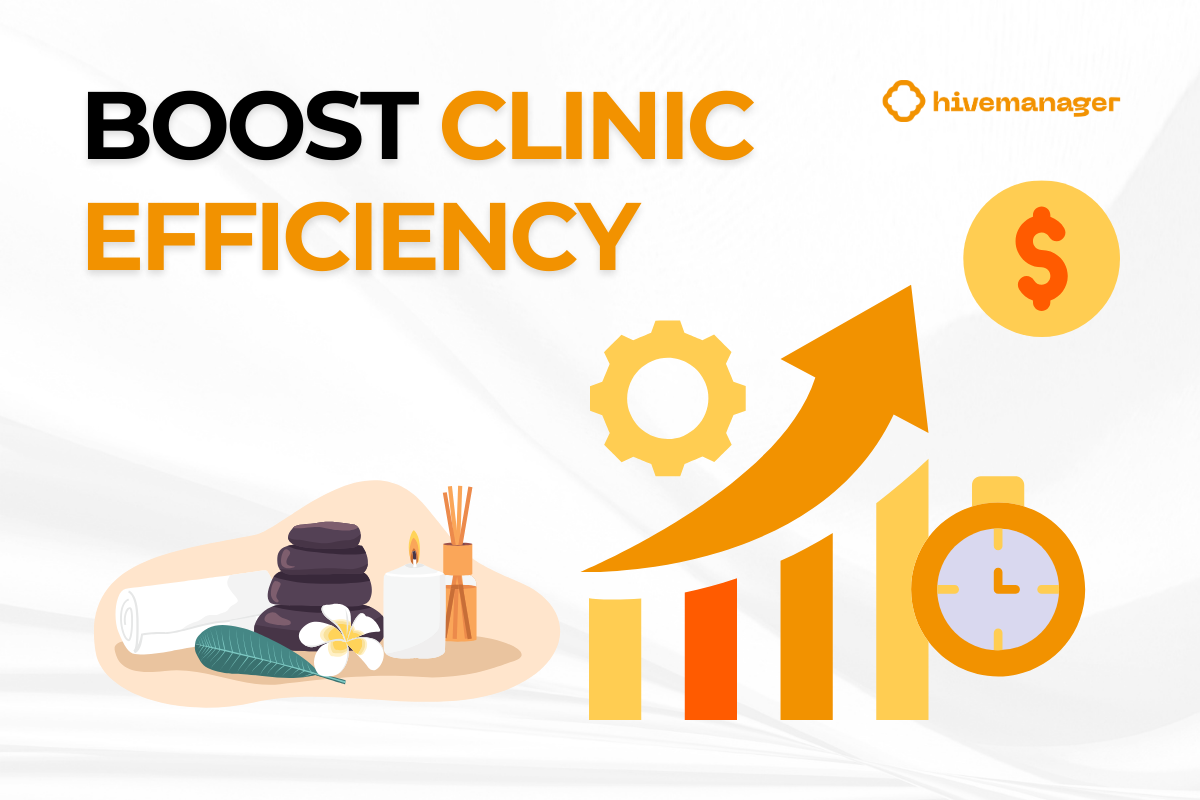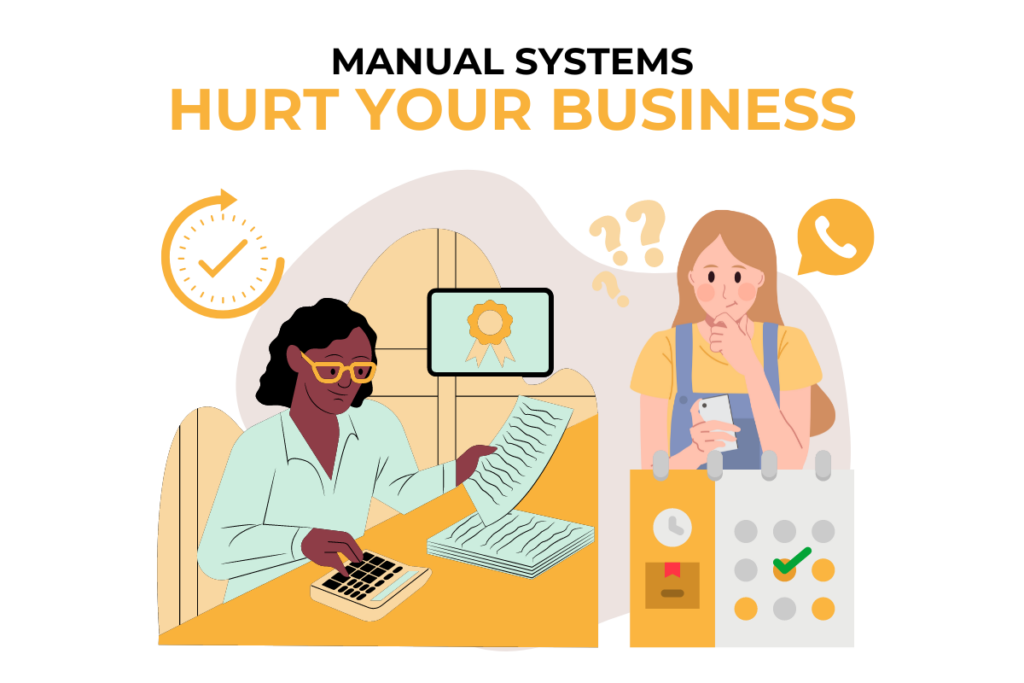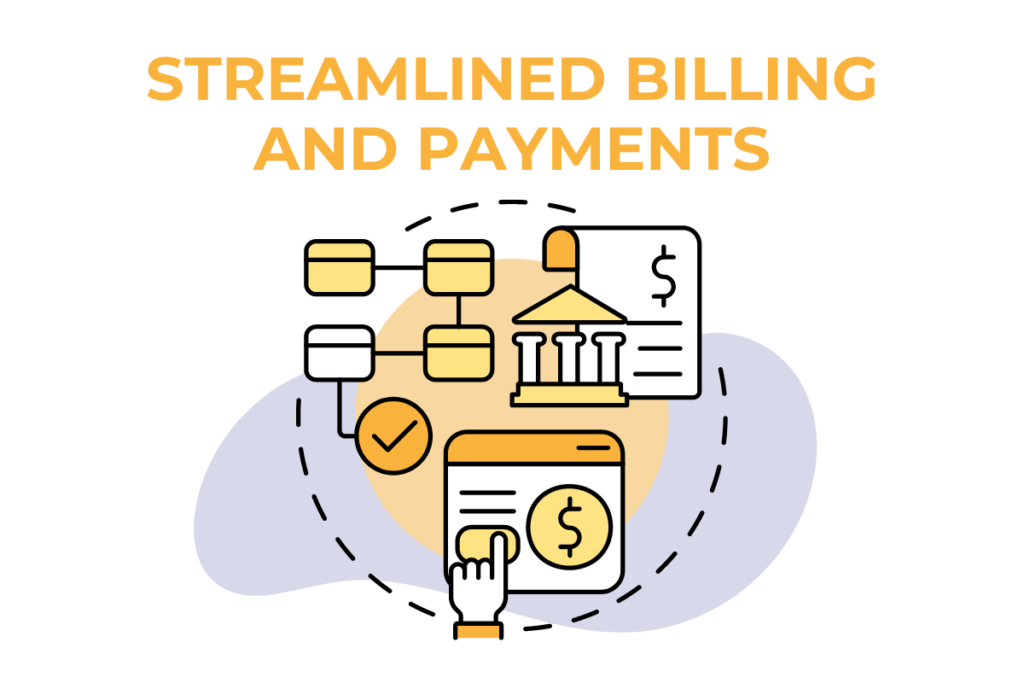The Hidden Costs of Inefficiency in Massage Therapy Clinics
Running a successful massage therapy clinic goes beyond providing excellent care. Administrative tasks like managing schedules, client records, and payments can quickly become overwhelming, especially as your clinic grows. Studies show that clinics using outdated systems can lose up to 20% of potential revenue due to missed appointments, billing errors, and other inefficiencies. The consequences aren’t just financial—staff morale can suffer from struggling to keep up with disorganized systems, and clients may experience delayed services or inconsistent care.
If you’re bogged down by these tasks, you’re not alone. Massage software is designed to streamline operations, improve team communication, enhance client satisfaction, and free up more time for what truly matters: helping your clients. This article will explore how massage software can address these challenges and help elevate your clinic, ensuring operational efficiency and sustainable growth.
The Challenges of Manual Systems: Why Outdated Methods Hurt Your Business
Inefficiencies You May Not Realize
Managing your clinic with manual or disconnected systems—such as paper schedules, spreadsheets, or a patchwork of different tools—creates a workflow full of inefficiencies. The hidden costs of these outdated methods can be significant, even if not immediately obvious. Time is wasted correcting scheduling errors, searching for misplaced client records, or resolving billing discrepancies. While these methods may have worked when your clinic was smaller, they quickly become inadequate as your business expands. The result? You lose valuable time, miss out on revenue, and risk damaging client trust due to preventable administrative mistakes. Scaling a clinic requires efficiency, and relying on disjointed systems only stifles your growth.
How One Clinic Saved Thousands with Automation
A busy clinic in New York discovered that its reliance on manual scheduling systems was not just costing time—it was impacting its bottom line. Scheduling errors, double bookings, and missed appointments led to over $10,000 in potential revenue loss each year. Clients frequently canceled or forgot appointments, and without automated reminders or a reliable system in place, rescheduling became a headache for both staff and clients. This inefficiency also frustrated staff, who spent valuable time correcting mistakes instead of focusing on client care.
After implementing a comprehensive massage software solution, the clinic saw an 85% reduction in scheduling errors and no-shows. Automated reminders helped clients stay on top of their bookings, while real-time availability ensured staff schedules were properly managed. This shift not only improved operational efficiency but also led to smoother communication between therapists and front-desk staff, further enhancing the overall client experience.
As a result, the clinic’s cash flow improved, they could serve more clients without administrative chaos, and both client satisfaction and staff morale increased significantly. This strategic investment in software not only recovered lost revenue but also positioned the clinic for sustained growth.
Automated Scheduling: The Key to Minimizing No-Shows and Double Bookings
How Automation Can Transform Your Booking Process
One of the most significant challenges massage clinics face is managing appointments efficiently, particularly as the volume of clients increases. Relying on manual scheduling methods, such as paper calendars or spreadsheets, often leads to errors that can disrupt the entire workflow. Double bookings, missed appointments, and last-minute cancellations can wreak havoc on your clinic’s profitability. These mistakes result in lost revenue from unused time slots and strained client relationships, as clients may feel frustrated by the lack of organization.
Massage software addresses these challenges by offering real-time availability updates, online booking options, and automated reminders. With real-time availability, both staff and clients can instantly see which appointment slots are open, reducing the risk of overbooking or miscommunications. Online booking allows clients to schedule appointments at their convenience, boosting bookings and overall client satisfaction.
Automated reminders—sent via email or text—significantly cut down on no-shows by notifying clients of upcoming appointments and giving them the option to reschedule if necessary. This not only keeps your schedule full but also prevents last-minute cancellations, which can lead to revenue loss. Additionally, therapists can view their updated schedules in real time, ensuring they are prepared for each client, minimizing downtime, and providing a more seamless experience.
By synchronizing the scheduling process for both clients and therapists, massage software helps streamline operations, reducing administrative burdens while enhancing client experience. These integrated features free up valuable time for your staff, allowing them to focus more on client care and less on managing a chaotic appointment book. The result is a more profitable, efficient, and client-friendly operation that supports the long-term growth of your clinic.
Reduce No-Shows with Automated Client Notifications
Missed appointments are one of the most significant—and often overlooked—causes of revenue loss in the service industry, particularly in massage therapy clinics where each time slot represents an opportunity for income. When clients fail to show up, not only is revenue lost, but the therapist’s valuable time is wasted—time that could have been spent with another paying client. Over time, these missed appointments can add up to thousands of dollars in lost income, severely disrupting your clinic’s operations.
Automated appointment reminders are one of the most effective ways to combat this issue. Studies have shown that sending reminders via text or email can reduce no-show rates by as much as 50%. These reminders keep your clinic top of mind for clients who might otherwise forget about their scheduled session. Whether it’s a busy professional juggling multiple responsibilities or a client who booked weeks in advance, a simple reminder ensures they don’t accidentally overlook their appointment.
By integrating automated reminders into your clinic’s booking system, you can set notifications to go out at optimal times—usually 24 to 48 hours before the appointment. This reduces the likelihood of clients forgetting and gives them enough time to reschedule if necessary. Some systems even include links that allow clients to easily confirm, modify, or cancel their appointments with a few clicks, reducing the administrative burden on your staff.
This proactive approach to scheduling ensures that your appointment book stays full and your revenue remains consistent. It also improves time management for therapists, allowing them to focus on delivering high-quality care without the frustration of last-minute changes or no-shows. Additionally, clients appreciate the professionalism of receiving timely reminders, enhancing their overall experience with your clinic. Ultimately, automated reminders not only protect your clinic’s revenue but also contribute to a smoother, more efficient operation that benefits both clients and staff.
Centralized Client Management: Say Goodbye to Disorganized Records
Keeping Client Information Accessible and Secure
A disorganized client management system can have far-reaching consequences on the quality of care provided in a massage therapy clinic. Incomplete or inaccurate records not only lead to inefficiencies but also compromise your ability to deliver personalized treatments tailored to each client’s needs.
Without a centralized system, therapists often have to rely on paper notes or scattered digital files stored in various locations—prone to errors, omissions, and time-consuming searches. This lack of organization can lead to missed details about a client’s medical conditions, treatment preferences, or past sessions, resulting in inconsistent care and diminished client satisfaction.
Manual methods also increase the likelihood of human error. Handwriting can be misread, papers can get lost, and scattered records can be difficult to update accurately. Therapists may waste time before or during appointments searching for information or trying to remember key details about a client’s treatment history. This disrupts the flow of sessions and diminishes the trust clients have in your clinic’s professionalism.
Massage software provides a comprehensive solution by centralizing client data in one easy-to-access location. This includes vital information such as treatment histories, medical conditions, allergies, and detailed SOAP (Subjective, Objective, Assessment, Plan) notes. Having this information organized and immediately available allows therapists to quickly review a client’s background before each appointment, enabling them to tailor treatments based on the client’s specific needs and preferences.
For example, a therapist may review notes on a client’s recurring muscle tension or remember to avoid certain oils due to allergies—all thanks to organized, detailed records stored within the software. This leads to more personalized and effective care, which enhances client satisfaction, improves outcomes, and encourages repeat visits.
Moreover, massage software allows for secure storage of sensitive information, ensuring that client records comply with privacy regulations like HIPAA. This not only protects your clients’ personal information but also helps you avoid legal issues from data breaches or improper record-keeping.
Beyond improving individual client interactions, centralized client management systems also make it easier to analyze client trends and behaviors. You can track which treatments are most popular, identify opportunities for upselling additional services, and target specific clients for follow-up offers or loyalty programs. Having all client data in one system helps you deliver a seamless, organized experience that ultimately fosters client loyalty and drives business growth.
Boosting Client Retention Through Better Record Keeping
A clinic that transitioned from manual record-keeping to centralized digital SOAP notes experienced a profound shift in both the quality of care and client retention. Previously, therapists struggled with fragmented client information, relying on paper records or scattered digital files that were often incomplete, difficult to access, or time-consuming to review. This disorganization delayed treatment sessions and made it challenging for therapists to offer consistently personalized care, ultimately affecting client satisfaction and retention.
Once the clinic adopted a system that centralized digital SOAP notes, the change was immediate and measurable. Therapists now had quick, seamless access to comprehensive treatment histories, allowing them to tailor each session to the client’s specific needs, preferences, and medical conditions. For example, a therapist could review a client’s past complaints of lower back pain, assess the effectiveness of prior treatment methods, and adjust the approach for the next session. This continuity of care ensured that clients felt heard and valued, reinforcing the sense that their therapist was fully invested in their well-being.
The digital system also facilitated better preparation before appointments. Instead of searching through paper files, therapists could pull up a client’s complete history with a few clicks. This efficiency allowed more time to focus on treatment, making sessions feel more personalized and less rushed. Clients noticed the difference, often commenting on the therapist’s understanding of their needs, leading to higher satisfaction and stronger relationships between clients and the clinic.
As a result of this enhanced level of care, the clinic saw a noticeable boost in client retention. Clients were more likely to return for follow-up appointments, trusting that their therapist would remember their treatment preferences and provide consistent, effective care. The ability to build on past treatments without having to re-explain issues fostered a sense of reliability and professionalism.
Furthermore, the clinic used the insights from digital SOAP notes to identify trends and anticipate client needs. The system highlighted clients who hadn’t visited in a while, prompting follow-up reminders or targeted offers for additional services. This proactive approach increased repeat bookings, reminding clients of the value the clinic added to their overall health.
By improving client retention through personalized, attentive care, the clinic not only saw an increase in repeat appointments but also benefited from positive word-of-mouth referrals. Satisfied clients were more likely to recommend the clinic to friends and family, amplifying its reputation and client base. Ultimately, the shift to centralized digital SOAP notes became a catalyst for sustained business growth and a more loyal, engaged clientele.
Streamlined Billing and Payments: Enhancing Cash Flow and Reducing Admin Time
Simplifying Billing to Improve Revenue
Billing is one of the most time-consuming and complex tasks for any massage therapy clinic, especially as the business grows. The process becomes even more cumbersome when managing insurance claims, handling various payment methods, and reconciling invoices—all requiring meticulous attention to detail to ensure accuracy. Clinics relying on manual systems or disjointed tools often encounter billing errors, leading to delayed payments, disputes, and cash flow disruptions.
The complexity of billing is amplified by the need to process multiple payment types—credit cards, bank transfers, mobile payments, and cash. Manually tracking and reconciling these transactions can lead to discrepancies and administrative bottlenecks. Moreover, clinics accepting insurance must navigate the intricacies of insurance claims, which involve filling out forms, meeting deadlines, and following up on rejections. This can quickly consume staff time, pulling focus away from client care.
Massage software transforms this traditionally tedious process by automating key aspects of billing and payment management. Invoicing is streamlined—at the click of a button, the system generates invoices for each completed session, automatically applying discounts, taxes, or special offers. Integrated payment processing allows clients to pay using their preferred method, whether through credit card, mobile payments, or online transfers. This real-time tracking reduces the administrative burden on your staff and ensures all transactions are properly recorded.
Additionally, the software automates insurance claims by generating and submitting the necessary forms to insurance companies, tracking their progress until approval and payment. This automation significantly reduces the time spent on claim submissions and minimizes human error, such as missed deadlines or incorrect form entries. The software also alerts your team to rejected claims or follow-up tasks, ensuring that no payments slip through the cracks.
Simplifying these processes dramatically reduces the likelihood of billing errors, which can frustrate both clients and staff. Billing mistakes like incorrect charges or unprocessed claims delay revenue, making it difficult for clinics to maintain consistent cash flow. Inconsistent cash flow can lead to stress for clinic owners, impacting the ability to budget for staffing, supplies, or marketing efforts aimed at growth.
Automated billing and payment tracking help maintain a steady revenue stream. Real-time payment tracking gives you a clear understanding of your clinic’s financial standing, allowing for better financial planning and decision-making. This peace of mind lets you focus on growing your clinic and providing excellent care.
Moreover, automation enhances the client experience. Clients appreciate the convenience of paying quickly and securely through multiple channels, while automated invoicing ensures accurate, detailed bills immediately after sessions. For clients using insurance, the streamlined claims process reduces the wait time for reimbursement, leading to higher satisfaction.
Offering Flexible Payment Options to Improve Client Satisfaction
Clients today expect convenience at every touchpoint, including how they pay for services. Offering diverse payment methods is no longer a luxury—it’s a necessity. Limited payment options like cash or checks can frustrate clients and create unnecessary friction in what should be a smooth process.
Massage software helps solve this by integrating various payment gateways, providing clients with flexibility. Whether they prefer credit cards, mobile payment apps, or bank transfers, offering a range of payment options ensures clients can complete transactions quickly and conveniently. This enhances the client experience and reflects your clinic’s commitment to modernizing operations.
Convenience builds trust and loyalty. When clients can easily pay through their preferred method, whether it’s tapping a card, using a mobile app, or processing an online transfer, they feel in control of the transaction. Mobile payments, for example, are becoming increasingly popular for their ease and security. With mobile wallets like Apple Pay or Google Pay, clients can settle bills in seconds, bypassing the need for physical cards or cash. This streamlines the checkout process, letting clients focus on their overall experience at your clinic.
Offering multiple payment options also speeds up the payment process, ensuring your clinic gets paid faster. Clients are less likely to delay payment due to inconvenience. For recurring clients, massage software can securely store payment information, enabling faster checkouts for future appointments. This reduces the time staff spends processing payments, freeing them to focus on more important tasks.
Integrating various payment gateways also minimizes errors and delays. Manual payment processing—especially for cash or checks—leaves room for human error, like miscalculating totals or forgetting to record payments. The software automatically tracks each transaction in real-time, ensuring payments are accurately logged and instantly reflected in your records.
Massage software simplifies online payments, allowing clients to pay when they book, streamlining your processes and reducing no-shows or delayed payments. This integrated approach creates a seamless experience for clients who want to secure their appointments without visiting the clinic.
Offering multiple payment options also improves accessibility. Clients may have different preferences or access to payment methods based on their location or financial institution. By offering a broad range of payment options, your clinic ensures no client is excluded based on payment preference.
Multiple payment gateways can also boost revenue. Clients who can easily pay for services are more likely to make additional purchases, such as booking extra treatments or buying gift certificates. The ease of payment facilitates decision-making, encouraging clients to say “yes” to services when they know they can pay in a way that suits them.
In short, integrating multiple payment gateways improves the client experience and contributes to operational efficiency. Faster, more accurate payments reduce administrative overhead, while the flexibility of payment options keeps clients satisfied and loyal. By making payments smooth and convenient, your clinic can boost retention, improve cash flow, and position itself as a modern, client-centric business ready to meet today’s evolving consumer needs.
Team Communication and Task Management: Ensuring Your Clinic Runs Smoothly
Keep Your Staff on the Same Page with Real-Time Updates
Running a busy clinic involves juggling multiple tasks, from scheduling appointments to managing client preferences, handling tasks, and coordinating staff. In such a fast-paced environment, communication gaps between therapists, administrative staff, and management can create chaos. Without a clear system to keep everyone in sync, small mistakes can escalate into bigger problems, leading to appointment overlaps, forgotten tasks, or miscommunication about client needs. These errors not only disrupt daily operations but can also negatively affect the client experience, potentially damaging your clinic’s reputation.
Massage software addresses this issue by offering built-in task management and communication features that keep your entire team informed and aligned. With real-time updates, staff members can instantly see the latest information regarding bookings, cancellations, and client needs. Whether it’s a last-minute schedule adjustment, an unexpected client cancellation, or an urgent client request, the software ensures everyone stays on the same page.
For instance, therapists no longer need to check in with the front desk to confirm their daily appointments or wonder if any schedule changes have been made. Administrative staff can update bookings or task assignments in the software, and therapists will be notified immediately. This real-time visibility eliminates double-booked appointments and ensures therapists are aware of new client requests.
Real-time updates also reduce the margin for human error. If a client reschedules, the administrative team can make that change instantly, ensuring the therapist is notified. Without this communication, the front desk could forget to inform the therapist, leading to confusion when the client shows up at an unexpected time.
Real-time updates also allow management to monitor clinic operations from anywhere. With the ability to view appointments, staff schedules, and client notes from a centralized platform, managers can step in as needed, ensuring workflows remain smooth.
Managing Therapist Schedules More Effectively
One of the most common challenges massage clinics face is managing therapist schedules, particularly when the clinic is busy or short-staffed. Without an organized system, scheduling conflicts can arise, leading to situations where therapists are either double-booked or left with gaps in their day. This inefficiency wastes time, frustrates staff, and ultimately leads to lost revenue.
Massage software with task management features revolutionizes how clinics assign tasks and manage schedules. With real-time visibility into each therapist’s availability, front desk staff or managers can allocate appointments based on up-to-the-minute information. Instead of relying on guesswork or outdated paper schedules, staff can see who is available at any given time and book clients accordingly.
For example, if a client calls to make an appointment, the software allows staff to immediately check which therapists are available during the requested time slot. This eliminates the risk of double-booking a therapist or creating scheduling gaps. The therapist’s calendar is automatically updated, and they receive a notification of any additions or changes.
Task management features also allow for the assignment of non-client-related tasks, such as restocking supplies, cleaning treatment rooms, or preparing for upcoming appointments. By scheduling these tasks during therapist downtime, the software ensures staff are fully utilized without being overwhelmed. This increases productivity while preventing burnout, as therapists can better manage their workload.
Another key advantage is the software’s ability to respond quickly to last-minute changes. If a therapist calls in sick or a client cancels at the last minute, the software makes it easy to reassign appointments or tasks to another available staff member. The system updates all relevant team members in real-time, ensuring a smooth handover. Clients can be automatically notified, reducing the likelihood of miscommunication.
The ability to manage therapist schedules effectively through task management software improves internal efficiency and enhances client satisfaction. With fewer scheduling errors and smoother operations, clients receive high-quality care. For therapists, having a clear, organized schedule ensures they can focus on providing the best care possible without worrying about administrative details.
By reducing scheduling conflicts, increasing productivity, and ensuring smooth communication, massage software with task management capabilities dramatically improves your clinic’s workflow. This results in a more efficient, professional, and client-centric operation that benefits both staff and clients.
Data Insights and Reporting: Using Business Intelligence to Drive Growth
Leverage Reporting Tools to Make Smarter Decisions
Running a successful massage therapy clinic requires more than just ensuring client satisfaction—it demands a deep understanding of the metrics that drive performance. Key performance indicators (KPIs) such as client retention, revenue per client, therapist productivity, and the popularity of specific services provide valuable insights into your clinic’s health. Without a clear understanding of these metrics, it’s difficult to identify areas for improvement or spot opportunities for growth. Massage software’s reporting tools offer a data-driven approach to making smarter business decisions.
With detailed reporting features, massage software allows you to track critical KPIs over time. For example, you can monitor how well your therapists are performing in terms of client retention and revenue generation. Regularly reviewing this data helps you identify top-performing therapists and replicate their success across the clinic. At the same time, you can spot underperformance and address it through training, scheduling adjustments, or other targeted strategies.
Revenue per client is another vital metric to analyze. This KPI tells you how much revenue each client generates, including regular appointments and upsell opportunities like add-on services or retail sales. If revenue per client is lower than expected, this could signal the need to refine your pricing strategy or improve the promotion of additional services.
Service popularity data also offers crucial insights into which treatments are in high demand and which may be underperforming. For example, if you offer sports, deep tissue, and prenatal massage, tracking the number of bookings for each helps you allocate resources effectively. Popular services may require additional therapist availability, while less popular ones may need more marketing support or pricing adjustments.
These reporting tools don’t just provide raw data—they offer actionable insights. You can set specific goals, such as increasing client retention by 10% over the next quarter, and use the data to measure your progress. Massage software enables a proactive approach to managing your business, ensuring your clinic continues to grow and thrive.
Using Data to Improve Client Retention
Client retention is one of the most important KPIs for any service-based business, especially massage therapy clinics. Retaining clients is more cost-effective than constantly acquiring new ones, and loyal clients tend to spend more over time. Without monitoring retention data, it’s hard to gauge how well your clinic is performing in this area. Massage software offers comprehensive client retention reports that reveal patterns in client behavior, helping you develop strategies to keep clients coming back.
For instance, you can track how frequently clients return for appointments after their initial visit. If clients aren’t rebooking for specific services, this could indicate room for improvement. Perhaps follow-up after their initial visit is lacking, or the service itself needs enhancement to meet client expectations. Identifying these trends early allows you to make adjustments, such as sending personalized post-session emails or offering loyalty incentives to encourage rebooking.
Retention data also highlights which services or therapists have the highest rebooking rates. If certain therapists consistently retain clients, this provides insights into their quality of care. You can learn from their success and share best practices with the rest of the team, ensuring consistent service across the board.
Massage software also monitors how long it’s been since a client’s last visit. This allows you to create automated campaigns to reach out to clients who haven’t returned in a while. Personalized reminders or exclusive promotions can encourage rebooking, boosting retention. For example, if a client hasn’t visited in three months, you might send them a special offer like 10% off their next session, enticing them back.
Retention data can also reveal seasonal patterns. If you notice dips in retention during certain months, you can plan ahead by offering seasonal promotions or adjusting your marketing strategies to maintain steady engagement.
By continuously monitoring retention data, you can stay ahead and take actions that address client needs. This proactive approach strengthens relationships, stabilizes revenue streams, and drives long-term success for your clinic.
What to Look for in Massage Software: Key Features to Consider
The Essential Features Every Clinic Needs
Not all massage software is created equal. Selecting the right platform for your clinic is crucial. Key features to look for include:
- Online booking and scheduling: Real-time availability and the ability to book appointments online.
- Automated reminders: Notifications that reduce no-shows and keep your calendar full.
- Client management: Centralized records that store client histories, preferences, and treatment notes.
- Billing and payments: Integrated payment gateways and automated invoicing.
- Task management: Tools to assign and manage tasks between staff members.
- Reporting and analytics: Performance insights that help you make data-driven business decisions.
Choosing software with these features will set your clinic up for long-term success by streamlining operations and improving both staff and client satisfaction.
Ready to Streamline Your Massage Therapy Clinic?
Investing in massage software goes beyond streamlining operations—it frees up more time for what truly matters: your clients. From automated scheduling and billing to improved client management and insightful reporting, the right software can transform your clinic. Take the first step toward optimizing your operations by exploring software solutions that meet your clinic’s unique needs today.
4 FAQs About Massage Software
What are the benefits of using massage software? Massage software streamlines scheduling, client management, billing, and reporting, which helps reduce administrative workload, improve cash flow, and enhance the overall client experience.
How does massage software reduce no-shows? Automated reminders, sent via email or SMS, ensure clients remember their appointments, drastically reducing the number of no-shows.
Can massage software handle insurance claims? Yes, many massage software platforms offer automated billing and insurance claims processing, making it easier to manage payments and ensure quicker reimbursements.
What key features should I look for in massage software? Look for features like online booking, automated reminders, centralized client management, integrated billing systems, task management tools, and reporting features to help optimize your clinic’s operations.
